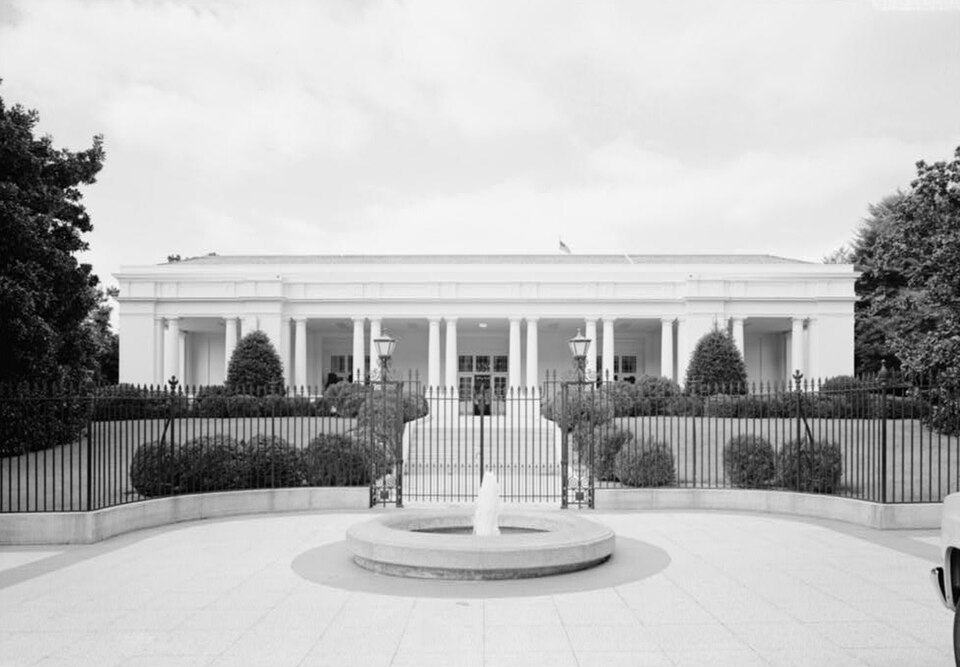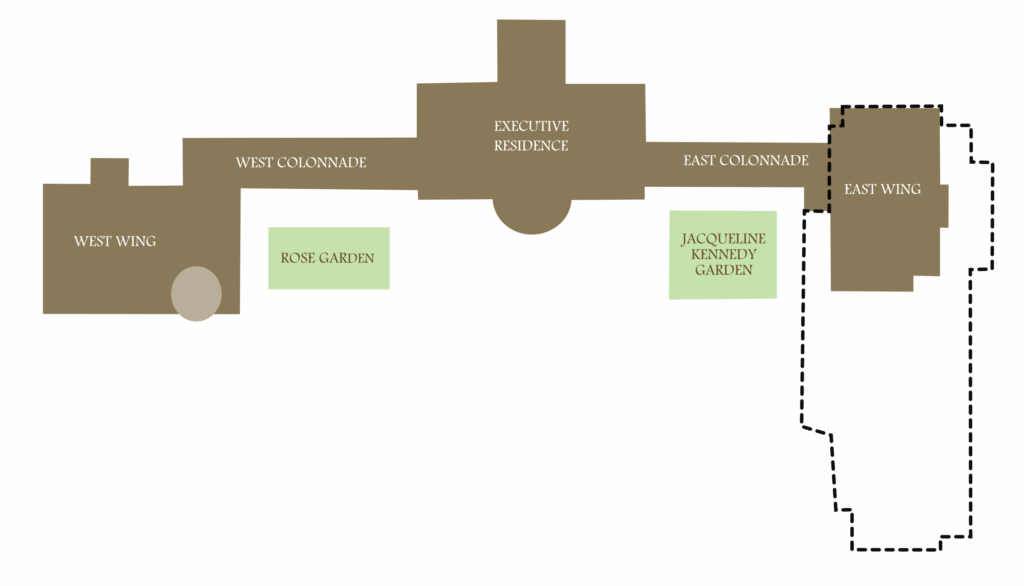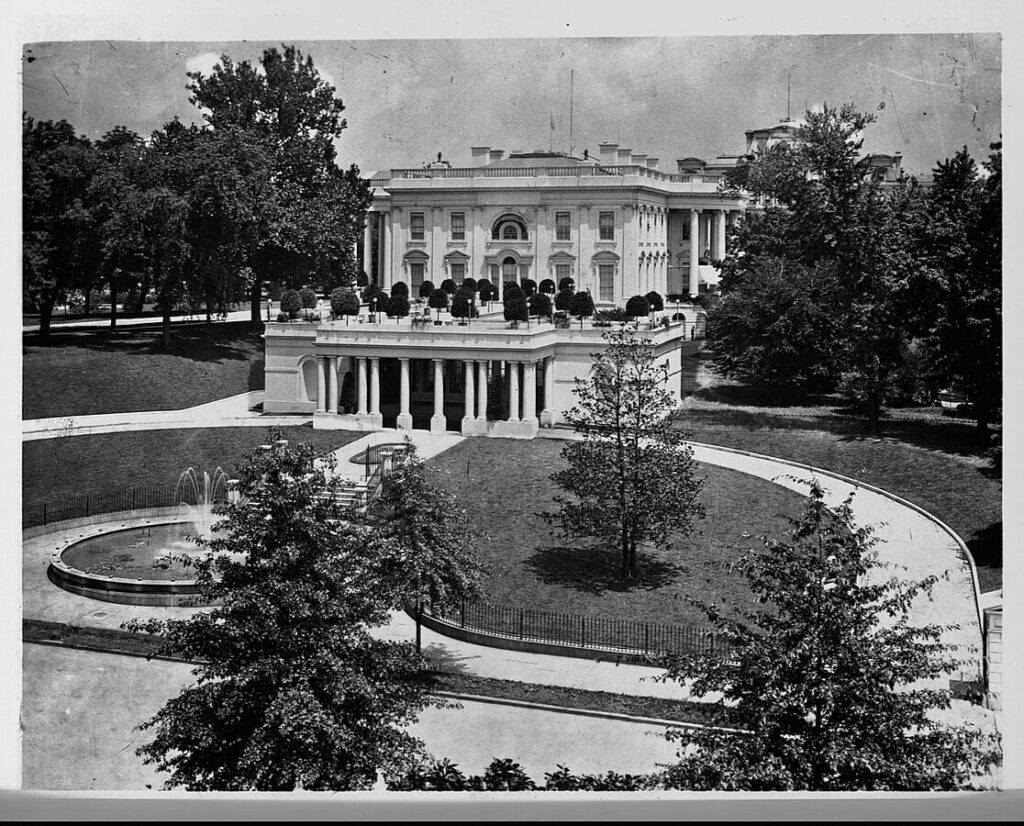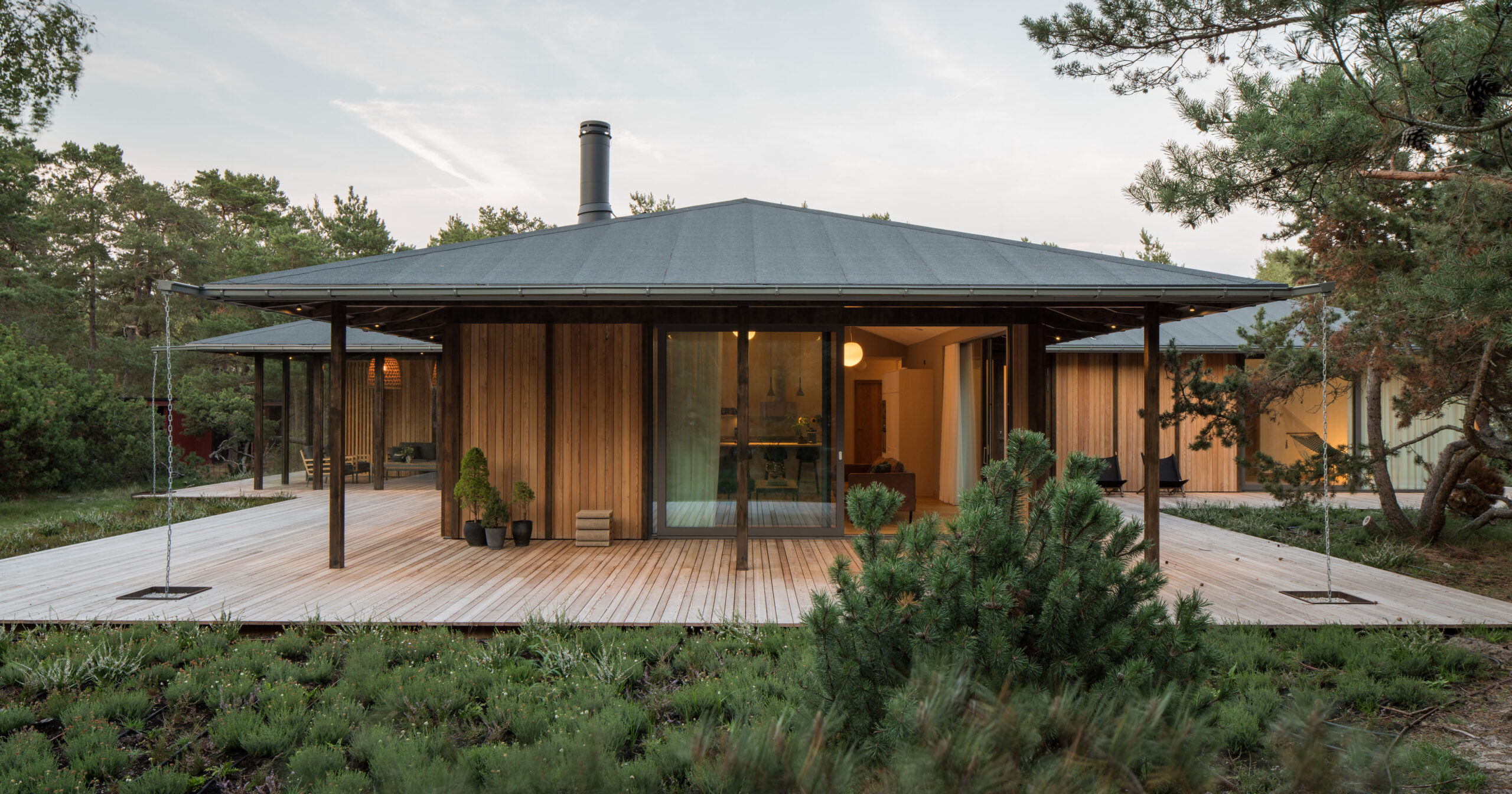In Memoriam: The East Wing (1942 – 2025)

Architizer is delighted to reveal the winners of the 2025 Vision Awards! We'll continue celebrating the power of architectural representation — get on the program mailing list by clicking here.
“If the West Wing is the mind of the nation, then the East Wing is the heart.”
– Betty Ford, First Lady of the United States, 1974 – 1977.
Given the terrifying state of American politics, it might seem trite to complain about the fate of the East Wing of the White House, which was abruptly torn down last month to make room for a planned 90,000 square foot (8,360 square meter) ballroom, an addition that will dwarf the central Executive Residence and radically alter the proportions of the White House complex.
As tasteless, ahistorical, and preposterous as this ballroom will be — and it will be tasteless, ahistorical and preposterous, despite the arguments of New York Times columnist Ross Douthat — this project is, at worst, a crime against aesthetics. The ballroom will not cut public benefits, compromise global stability, or undermine civil rights or the rule of law. One could argue, plausibly, that no White House renovation, however tacky, actually matters, especially not to people who are suffering. From this premise, one could conclude that critics of the regime should focus less on symbolism and instead stick to issues that materially impact ordinary people.
There is a part of me that agrees with this argument. And yet, when I saw the photos of the East Wing reduced to rubble, I couldn’t help but feel a pang of despair. I imagine many other Americans felt the same thing, realizing, maybe for the first time, that they felt an emotional attachment to the White House. Even those who count themselves cynics are repelled by scenes of outright desecration. In the face of such an image, the least one can do is take inventory of what has been lost.

Trump’s ballroom, indicated by the dotted line, will dramatically alter the footprint of the White House. Graphic by Belbury, based on prior work by Sushiflinger and ZooFari, White House ballroom plan, October 2025, CC BY-SA 3.0
The East Wing of the White House was not part of the original White House structure. It was first constructed in 1902 under Teddy Roosevelt as a guest entrance linked to the East Colonnade, which was first built under Thomas Jefferson. (Jefferson’s colonnade had been destroyed by this point, replaced by another at some point after the Civil War). Teddy Roosevelt’s East Wing was largely an entrance for guests during large social gatherings, a function it served until its demolition. In 1945, under Franklin Delano Roosevelt, the East Wing was expanded to cover a newly constructed emergency bunker. This was the two-storey structure that stood until last week, the East Wing that Americans were familiar with.
The larger building served not only as the official visitor entrance, but also as the home base of the White House social offices, including the office of the White House calligrapher, who is responsible for composing handwritten invitations to all of the president’s personal guests. I always loved that there is an official White House calligrapher. It reminds me of quirky offices in the UK like the Warden of the Swans.

The East Wing as it appeared in 1902, before FDR’s expansion. U.S. federal government, Public domain, via Wikimedia Commons
Beginning with Eleanor Roosevelt, the East Wing became a base of operations for the First Lady, who traditionally has been responsible for managing the White House social calendar and holiday initiatives. In 1977, Rosalynn Carter became the first First Lady to maintain an office in the East Wing, a tradition that was followed by every subsequent First Lady until Hillary Clinton, who kept her office in the West Wing in order to be closer to government operations. Mrs. Clinton, it must be remembered, was more involved in governing than any First Lady that came before her, with the exception of Edith Wilson, who secretly managed the affairs of her husband, Woodrow Wilson, after he suffered a catastrophic stroke.
The East Wing bordered the Jacqueline Kennedy Garden, which memorialized the First Lady who, more than any other, worked to preserve the White House’s historical integrity, renovating every room in the house in a way that was true to the intentions of the building’s original architect, James Hoban, and the tastes of the Founders. (Jackie Kennedy’s televised White House tour following these renovations, the first ever such tour of the White House, is worth viewing and can be seen here. In the opening scene, Mrs. Kennedy is shown waking down the East Colonnade toward the East Wing vestibule). The Jackie Kennedy garden was also destroyed in the demolition and it is not clear if it will be replaced.
Architecturally, the East Wing was modest, integrating seamlessly with the Neoclassical Executive Residence, which is the image people think of when they picture “The White House.” In its current form, it was designed largely by the official White House architect under FDR, Lorenzo Winslow.
As many people have pointed out since the East Wing’s demolition, Trump is not the first president to make changes to the White House. Under Truman, the building was gut renovated after the aging timber frame was declared structurally unsound, and the White House’s bones were replaced with steel supports. Like the East Wing, the West Wing was a modern addition to the White House, and even the storied Oval Office is a 20th century innovation, part of FDR’s expansion of the West Wing. (There had been an earlier Oval Office constructed by William Howard Taft in 1909, but this had been damaged in a fire). Many Americans are surprised to learn that Washington, Lincoln, and other historic presidents never worked from an Oval Office.

The East Wing as it appeared until October 2025. Photo by Jack Boucher, Public domain, via Wikimedia Commons
Readers should take heart that the history of East Wing was not totally demolished along with the structure. The furnishings and art in the East Wing were preserved, as was a 3-D scan of the building carried out by the White House Historical Association. “Every room, space, nook and cranny of the East Wing, whether it was molding or hinges or door knobs or whatever it was, was captured to the -nth degree,” explained Stewart McLurin, president of the association. This will be used for future exhibitions on the history of the White House. From the outside, this demolition appeared to have been carried out abruptly, and certainly without the input of Congress, but within the Executive Branch preparations have been in the works since August.
The controversy around Trump’s ballroom is best understood by comparing them to Jackie Kennedy’s renovations. While the latter aimed to celebrate the history of the building, making changes that were true to the historic functions of the home’s various rooms, the destruction of the East Wing callously erases an important part of White House history, namely, the contributions of First Ladies, especially in the 20th century as their role and influence grew. This history is connected to women’s history more generally, as the importance of the office of the First Lady expanded alongside the development of women’s rights. None of this is likely of interest to Trump, whose own spouse does not reside in DC and, in this second term at least, has not done much in her capacity as First Lady. But the history of the office of the First Lady should matter to the American people. I believe it does matter to them, which is why polls show that the majority of Americans disapprove of the East Wing’s demolition.
The East Wing may not have been the oldest or most well-known section of the White House, but this does not mean it wasn’t an integral part of “the people’s house.” It will be missed.
Architizer is delighted to reveal the winners of the 2025 Vision Awards! We'll continue celebrating the power of architectural representation — get on the program mailing list by clicking here.
Cover Image: The East Wing of the White House, Photo by Jack Boucher, Public domain, via Wikimedia Commons
The post In Memoriam: The East Wing (1942 – 2025) appeared first on Journal.


















































